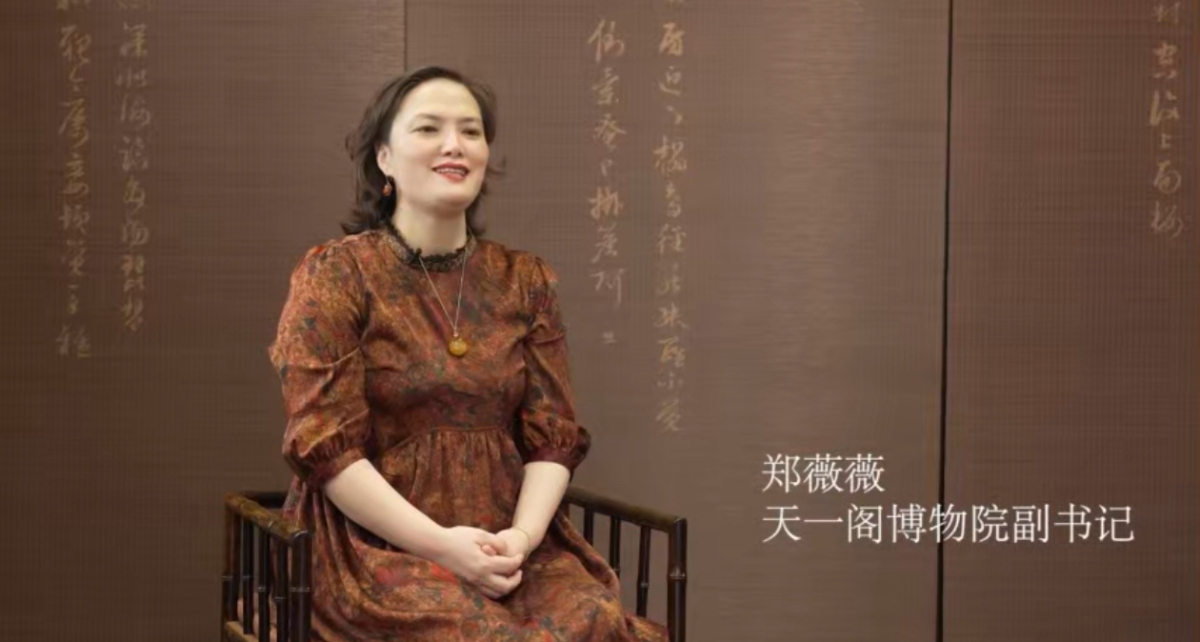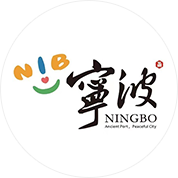This year marks the 550th anniversary of Michelangelo’s birth and the 55th anniversary of the establishment of diplomatic relations between China and Italy. On June 30, the Tianyi Pavilion Museum and Italy’s Casa Buonarroti (Michelangelo’s Birthplace Museum) held a special “cultural dialogue.”
On that day, Zheng Weiwei, Deputy Secretary of the Party Branch of the Tianyi Pavilion Museum, connected online with renowned Italian art historian and Casa Buonarroti Director Cristina Acidini. Under the theme “The Artistic Spirit of Michelangelo,” they offered an in-depth interpretation of Michelangelo’s artistic life, historical context, and enduring influence, revealing the inner resonance between the artistic spirit of the Italian Renaissance and the heritage of Eastern classical texts.
 Zheng Weiwei, Deputy Secretary of the CPC Party Branch of the Tianyige Museum
Zheng Weiwei, Deputy Secretary of the CPC Party Branch of the Tianyige Museum
 Cristina Acidini, Director of Casa Buonarroti
Cristina Acidini, Director of Casa Buonarroti
The two sides focused on the heritage value of cultural spaces. As the oldest surviving private library in China, Tianyi Pavilion has been passed down for over 450 years and now holds more than 300,000 volumes, including over 80,000 rare and precious works, preserving and extending the literary lineage of the East through its collections.
Casa Buonarroti in Florence, Italy, has been the sanctuary where the Buonarroti family safeguarded Michelangelo’s artistic legacy for centuries. Professor Acidini shared that the Casa houses authentic works by the master, along with documents, letters, drawings, and poems: “This house has never allowed Michelangelo to fade into history; instead, thanks to the efforts of later generations, it remains ever vibrant,” she said.
 Right photo: Michelangelo
Right photo: Michelangelo
Speaking of Michelangelo’s creative journey, Professor Acidini traced it back to 1490, when the teenage prodigy defied his father’s wish for him to study law and resolutely chose the path of art. He first apprenticed in the workshop of the famous Ghirlandaio brothers in Florence, and later entered the Garden of San Marco, established by Lorenzo de’ Medici, the Magnificent. The garden’s rich collection of antique sculptures became the cradle of his sculptural enlightenment.
 Right photo: Michelangelo's works
Right photo: Michelangelo's works
Between the ages of 15 and 17, Michelangelo produced two youthful masterpieces—Madonna of the Stairs and Battle of the Centaurs. The former uses shallow relief to depict a sacred scene, with marble in the background polished to near transparency, creating a painting-like ethereal effect. The latter uses high relief to portray the Greek mythological battle between the Lapiths and the Centaurs, with figures full of tension, reflecting his early exploration of the mechanics of human musculature. Subsequent works such as Angel Holding a Candlestick and St. Proclus continued the 15th-century artistic tradition while showing an innovative edge.
Michelangelo carved the eternal mark of the Renaissance into marble—a parallel, in some ways, to China’s Stone Drum Inscriptions, so named because their shapes resemble drums. The Tianyi Pavilion Museum’s treasured Northern Song rubbings of the Stone Drum Inscriptions, among the earliest surviving Chinese stone carvings, reveal a distinctive relief-like texture on paper through the “hammer rubbing” technique. The two traditions, Eastern and Western, are like a dialogue inscribed with chisels on stone.
 David statue
David statue
Michelangelo’s David has a special connection to Ningbo. In 2006, a fine replica of this work was presented by the Florence City Hall to Ningbo as a gesture of friendship, and it has stood in front of the Ningbo Grand Theatre ever since. Professor Acidini explained that in 1501, Michelangelo learned of a block of Carrara marble abandoned for decades, riddled with holes, in the workshop of Florence’s Cathedral of Santa Maria del Fiore. Over the next three years, working behind tight enclosures, he broke with tradition to create David, perfectly blending divinity and humanity—a work that cemented his legendary status in the Renaissance.
This was the twelfth instalment of “TianyiTalk” by the Tianyige Museum. Moving forward, the Pavilion will continue expanding its international “circle of friends,” innovating dialogue formats, fostering mutual learning between civilizations, and helping China’s outstanding traditional culture reach the wider world.
Source: Yongpai
Reporters: Xie Shuyi, Zhang Xinrui
Correspondent: Wang Xu
Editor: Ye Ke



